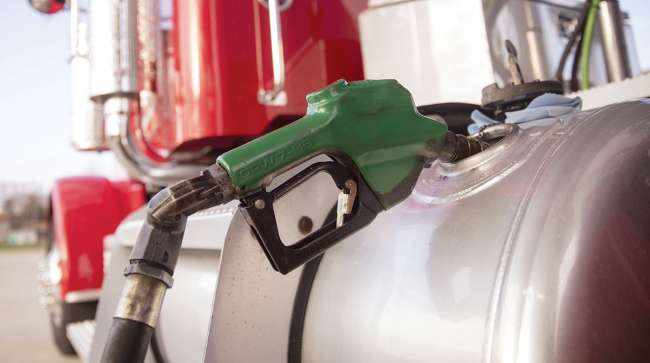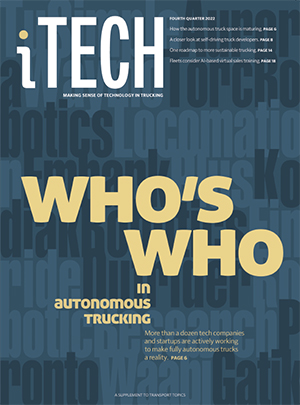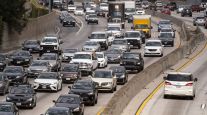Founder and CEO, TruckLabs
The Path Toward Sustainable Trucking

[Find the latest in trucking technology: Explore this quarter's issue of iTECH]
Every day I read a new article about an organization announcing sustainability goals and often these objectives are no longer decades away. These new goals have teeth and interim targets as soon as 2025, which require investment and concrete plans today.
For example, PepsiCo Inc. has a commendable goal by 2030 to reduce its Scope 1 and 2 emissions by 75% over a 2015 baseline. It is tracking against this goal, and by 2021 it already had achieved 25%.
Some of the hardest emissions to tackle are the emissions from trucking fleets. Zero-emission or electric trucks powered by decarbonized grids would, of course, eliminate these emissions. But beyond shorthaul and local delivery, we still have a long way to go to make that a reality. Even California’s recent Advanced Clean Trucks rule only looks for 40% of trucks to be electric by 2035. Between range and battery technology challenges, infrastructure issues, the total cost of ownership and proven over-the-road miles, electric for the long haul is going to take time. Ninety-five percent or more of Class 8 trucks being made today are diesel, and internal combustion engines will be with us for a while. To hit these goals, companies will have to work out how to squeeze more efficiency out of their diesel fuel economy. So how can today’s leadership start making an immediate impact?
No Empty Miles
One of the fastest ways to reduce emissions is to make every load count.

Burrows
According to digital freight matching firm Convoy, heavy-duty full truckload freight accounts for more than 252 million metric tons of carbon dioxide emissions each year, with 87 million metric tons resulting from empty miles.
We need to quit moving empty trucks. While it is complicated due to equipment compatibility and driver schedules, eliminating deadhead miles is becoming more and more possible.
American Transportation Research Institute reports that in 2021 deadhead miles were approximately 21% of all miles. Beyond the unnecessary fuel consumption, empty miles mean less revenue and higher costs for everyone.
There are so many great technologies out there today for load and route optimization, load sharing and collaboration, etc. We need to ensure we are taking advantage of these technologies or using high-tech brokerages that have invested in these technologies.
Improve Truck Aerodynamics
At highway speeds, aerodynamics contribute 50% to overall fuel economy. Drag is created along multiple points of the truck and trailer, including the front of the truck, the gap between the trailer and the tractor, the sides and underbody of the trailer and the back of the trailer. The smoother the airflow around those points, the lower the drag.

Q4 iTECH
►Who's Who in Self-Driving Truck Development
►Swarm Launches Satellite-Based Tracking Device
►Spireon Introduces Next-Gen Cargo Sensor
►Burrows: The Path Toward Sustainable Trucking
►Dysart: AI-Powered Sales Coaching
►Clevenger: Catching a Glimpse of Trucking’s Future
Explore the Issue!
Among the leading offenders on a truck, when it comes to wind resistance, is the gap between the tractor and the trailer, which can produce 25% of the overall drag. Because of the size of the gap, there is especially an opportunity to improve the aerodynamics of day cabs and compressed natural gas cabinets. Any gap of 18 inches or more between the tractor and trailer can produce increased air resistance. Covering the gap can save up to 6% of fuel.
Improving aerodynamics reduces fuel consumption which translates to lower overall CO2 emissions. Many fleet managers are working with manufacturers to ensure that they are purchasing the standard aero packages, but there are opportunities beyond those.
Fleets should explore other options beyond side extenders such as tractor-trailer gap reducers, tire inflation systems, wheel covers, mud flaps and trailer skirts.
The North American Council for Freight Efficiency has great resources to understand how these technologies can reduce your overall fuel consumption. The bonus to aerodynamics is that it not only improves miles per gallon for diesel and CNG engines but also will extend the range of battery-electric trucks as your fleet transitions.
Incentivizing and Educating Drivers
Smarter trucking will save fuel consumption over the long haul. Understanding driver behavior, giving real-time feedback and incentivizing drivers can lead to better mpg. Ensuring that your drivers are educated on how to get the best fuel efficiency for their trucks and routes is a great step forward.

Host Seth Clevenger delves into the TT Top 50 Global Freight Companies list, and how they are preparing for an uncertain future. Tune in above or by going to RoadSigns.ttnews.com.
Fleet operators can gather and analyze driver behavior to find patterns for feedback and better training.
According to Michael Roeth, executive director of NACFE, “Between the worst driver and the best driver, the difference in fuel economy can be up to 25%.”
Better training, better data and real-time feedback can be game-changing for better mpg and CO2 reduction.
As an advocate for sustainability in our industry, I am overjoyed to see so many organizations set big goals for our future. But my challenge for these leaders is to go beyond making plans for electric trucks and start thinking about steps to take on your current and near-term diesel fleets. We need to start with small steps today that will make a big difference now and hasten the ability to adopt alternative fuels as they become a more viable option.
Daniel Burrows is the founder and CEO of TruckLabs, a supplier of hardware and software products designed to reduce carbon emissions and improve fuel efficiency for commercial trucks. The company’s products include TruckWings, a tractor-mounted aerodynamic device that automatically closes the gap between the cab and trailer to reduce drag.
Want more news? Listen to today's daily briefing below or go here for more info:




